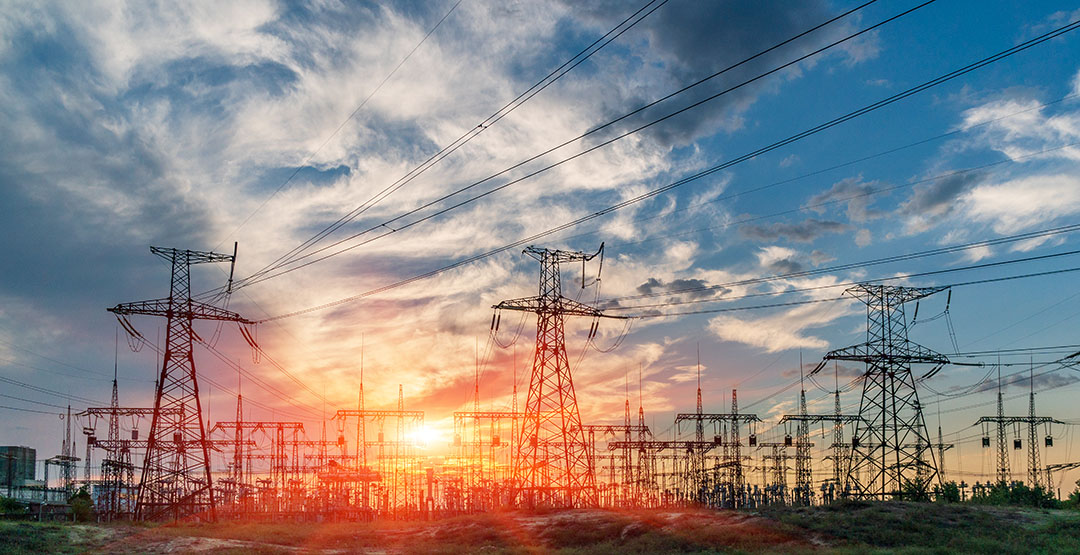Protecting Oil and Gas Workers from NORM and TENORM
Most of us are exposed to low levels of natural and man-made radiation every day. However, on an oil and gas site, workers can be exposed to higher levels of naturally occurring radioactive material, or NORM.

NORM can build up in pipelines and on equipment and high concentrations can pose a significant health hazard when they aren’t properly managed. NORM can be enhanced by human activity, such as oil and gas extraction, to become technologically enhanced NORM (TENORM), which can increase workers’ potential for exposure. Fortunately, oil and gas employers can help protect workers by making sure they’re aware of NORM/TENORM hazards and how to protect themselves.
What is Radiation?
Before we get into specifics about NORM, we need to understand what radiation is. Radiation is energy released by one object that travels to and is either deflected or absorbed by another object. Radiation can exist as particles or as pure energy, commonly as alpha particles, beta particles and gamma rays.
Alpha particles have more mass than beta particles, but they can’t travel as far, have less energy and can be blocked by skin and normal clothing. Beta particles are the size of electrons, have a higher energy level and can do more damage to the body but can still be blocked by simple barriers. Because both alpha and beta particles can be blocked by simple barriers, inhalation is generally the most dangerous route of exposure.
Gamma rays are usually more dangerous because they come in the form of pure energy, can travel hundreds of feet and can penetrate human skin. Anyone who works around or can be exposed to gamma rays needs full shielding to perform their duties safely.
What are NORM and TENORM?
NORM consists of materials found in nature that contain radioactive elements, including uranium, thorium, radium, radon and potassium. NORM can gather in plants, soil, rocks, water and underground deposits of crude oil, natural gas and other materials common on oil and gas sites.
NORM that has been impacted by human activity, such as oil and gas extraction or injection wells, can become TENORM and increase the risks of human exposure to radiation.
Natural and Man-Made Radiation
Background radiation exists all around us from both natural and man-made sources. One of the most common sources of natural background radiation we’re all exposed to is the sun. Sunlight is a necessary type of ultraviolet radiation that humans, plants and animals need to survive. However, too much sun exposure can lead to skin damage ranging from sunburns to skin cancer.

Man-made radiation sources are also present all around us. In fact, there is still radiation in the atmosphere from atomic explosions in the 1940s and 1950s. More common man-made radiation sources in our daily lives include:
- Older coal power plants
- Power lines or transformers
- Smoke detectors
- Certain medical procedures and equipment
- Glow-in-the-dark dials and signs, such as “EXIT” signs in older buildings
NORM and TENORM on Oil and Gas Sites
NORM and TENORM are most commonly encountered when production of crude oil leaves deposits inside production, processing and transportation equipment. NORM can collect when radioactive materials combine with minerals or stick to metal surfaces inside equipment, such as tubing, pipes and tanks. Produced water can collect radium that can leave NORM deposits inside separators, piping and tanks on site.
Most oil and gas personnel are exposed to NORM during waste transport and processing, maintenance, and equipment decommissioning. The greatest NORM exposure risk for most workers typically comes from inhaling alpha and beta particles during cutting, grinding, water and sand blasting, and other abrasive activities, particularly over long periods of time. However, workers can also be exposed by ingesting dust, water or food that has been contaminated with NORM, including instances of working around NORM without cleaning themselves or washing their hands first.
Site Policies and Preventative Measures

If NORM/TENORM is known to be present on a site, the employer should have a plan to find, manage and react to those materials. Most site plans should aim to keep all radiation levels “As Low as Reasonably Achievable” (ALARA). The ALARA approach involves reducing worker radiation exposure to safe levels by installing shielding, increasing distance between work areas and NORM sources, and minimizing exposure time to NORM sources.
An oil and gas site’s specific plan will vary depending on its characteristics, but plans often include:
- Radiation surveys to determine what types of radiation are present
- Exposure limits
- Warning signs
- Emergency procedures
- Employee roles, responsibilities and training
- Radiation-monitoring equipment and guidelines
- Safe work practices
- Personal protective equipment
- Contractor radiation policies
NORM/TENORM Decontamination and Disposal
Because removing, cleaning and refurbishing radiation-contaminated equipment and disposing of NORM/TENORM naturally brings about high levels of exposure, personnel need additional in-depth training and precautions before disposing of NORM or decontaminating equipment. Most oil and gas companies prefer on-site decontamination, since some equipment can’t easily be removed or replaced.
If decontamination cannot be performed safely on site, or if the equipment must be refurbished before being reused, offsite decontamination may be required. Oil and gas companies will generally bring in trained contractors to decontaminate equipment, but some companies may have dedicated personnel to decontaminate equipment on their sites.
Decontamination can expose the surrounding areas to radiation, so additional safeguards or barriers should be in place to prevent NORM from escaping the decontamination area. Any personnel involved in decontaminating or disposing of NORM must be aware of its hazards and the precautions necessary to safely perform decontamination.
Conclusion
Oil and gas workers can be exposed to NORM and TENORM in many different job duties and their employers need to be aware of those hazards. When site personnel know where those hazards are and how to protect themselves, they can perform their job duties safely and more effectively.
The Environmental Protection Agency (EPA) has a set of additional resources explaining the hazards of TENORM on oil and gas sites. SafetySkills also has a NORM Awareness course designed to help oil and gas employees understand the basics of radiation and NORM/TENORM and how they can stay safe on the jobsite.


